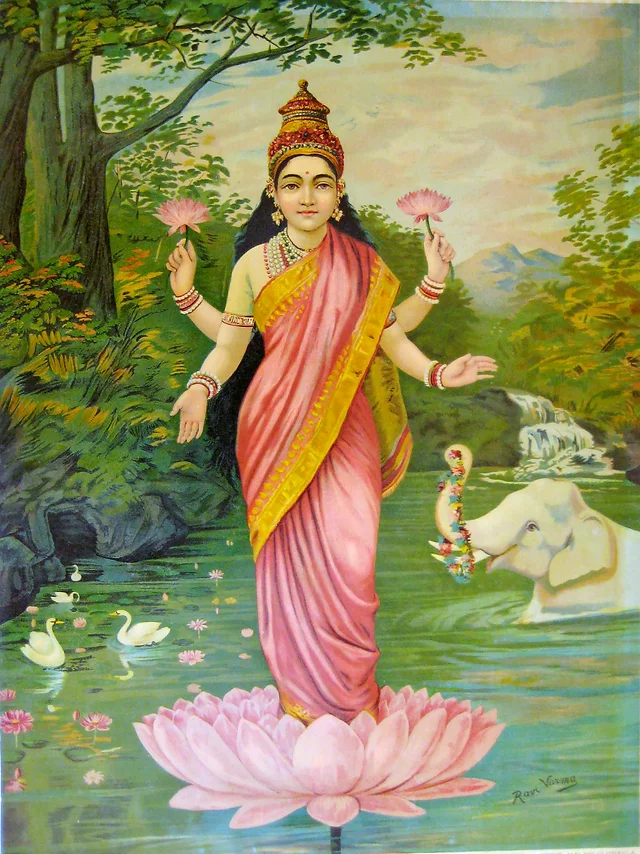Lotus: A Journey Through Time, Tradition, and Transcendence
- gauri gupta
- Nov 14, 2024
- 3 min read
The lotus is more than a flower; it is a story, a symbol, a journey across cultures and centuries, embedded within the heart of Indic civilization. From sacred scriptures to temple sculptures, from manuscripts to mudras, the lotus weaves a narrative as timeless as the waters from which it rises. Its journey is one that stretches across India and beyond, carried by the currents of Hindu and Buddhist thought, touching lands as far as Japan, Cambodia, and Mongolia.
For millennia, the lotus has bloomed in the mire of myths and metaphors. The ancient Atharvaveda speaks of the body as a lotus of nine doors, bound by the three strands of the gunas: sattva (goodness), rajas (passion), and tamas (ignorance). It teaches us that like the lotus rising from mud, humanity too can transcend its earthly entanglements, embodying purity amidst imperfection. This image—of being untouched by the world while living within it—is one that informs not only Indic spirituality but the broader vision of peaceful coexistence and inner purity.
In temple architecture, the lotus is both motif and foundation. In India’s ancient temples, the divine seat is often crafted as a lotus, raising gods and goddesses above the mundane. Lakshmi, the goddess of prosperity, stands upon a lotus, symbolizing the fertility of the land and the wealth buried in the earth’s womb. Sarasvati, goddess of wisdom, sits on a pristine white lotus, an icon of untainted intellect. Such images abound on the grand portals of Sanchi Stupa, where Lakshmi sits upon a lotus, flanked by elephants, sprinkling life-giving water from upturned trunks—an icon of vitality and abundance.
The lotus also transcends its earthly origins in Buddhist lore, blossoming as a symbol of enlightenment. In the Anguttara Nikaya, the Buddha is likened to the lotus: “unsullied by the waters” as he rises above worldly entrapments. This flower of “self-birth” (svayambhū) encapsulates the Buddhist philosophy of interdependence and compassionate detachment. The fully opened lotus is the very image of awakening, of attaining wisdom and compassion that shine upon the world, while the eight petals often signify the Eightfold Path that leads to liberation.
In medieval Indian art, the lotus is a poetic universe in itself. Artists of the Gandhara school carved Buddhas seated on lotus calyxes as early as the third century. The Padmapāṇi Avalokiteshvara, often depicted holding a lotus, embodies compassion and a purity that traverses the physical realm. In Japan, statues of the Buddha at the Horyuji monastery rest upon lotus seats, while in China’s National Palace Museum, lotus motifs flourish on the screens behind Amitabha Buddha, extending its teachings across oceans.
Its image, eternal and manifold, is preserved in scriptures and iconography as well as in complex architectural spaces like the Kailashanatha temple at Ellora, where lotus patterns resonate through the stone-carved mandalas. There, the lotus and wheel meld into symbols of cosmic order—Buddha’s teachings embodied as dharma wheels on lotus thrones.
Even as time turns, the lotus remains, embodying a philosophy that speaks to every generation. In an age where technology and materialism dominate, the lotus whispers a reminder: to rise above, to remain unsullied, to embrace values that transcend the transient world. It offers us a timeless vision, to be carried forward as a story told and retold, as a blossom held high above the mire.






Komentáře